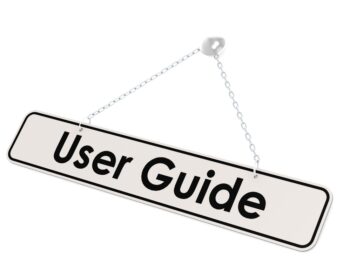One of the country’s largest Third Party Administrators (TPA) got into an embarrassing situation about a decade ago on the self-insured program of a Fortune 500 company. The embarrassing situation? The TPA did not know the difference between a medical-only claim and a lost-time claim when it came to billing.
The risk management of the self-insured company noticed its allocated loss adjustment expenses (various claim related expenses including the cost of claims handling) was much higher than anticipated. The cause was an increase in the number of lost-time claims and a decrease in the number of medical-only claims. Claims the self-insured company thought should have been billed as medical-only claims were being billed as lost-time claims. The claims servicing agreement between the TPA and the self-insured company called for medical-only claims to be billed at $125.00 each and the lost time claims to be billed at $950.00 each. The extra billing of $825.00 per claim was making a major difference in the allocated loss adjustment expenses of the self-insured.
Click Link to Access Free PDF Download
“8 ‘Think Outside the Box’ Tactics to Settle Workers’ Comp Claims”
The resulting fall-out from this embarrassing situation was the TPA had to re-think its billing structure for workers’ compensation claims. Historically TPAs bill a flat rate per file on self-insured programs, with one rate for medical-only claims and a second rate for lost-time claims. This allows the self-insured programs to estimate their allocated loss adjustment expense. This approach worked well when the injured employee went to the doctor, was treated and released to return to work with no time lost from work. This approach also worked well when the employee was off work for an extended period of time, eventually recovered and returned to work. What got the TPA into trouble were the work comp claims not fitting neatly into either category.
What do you call the claim where the employee is dedicated to his employment, works through his injury, never misses a day from work, but receives a 5% permanent disability rating? What do you call the claim where the employee is off work less time than the state mandatory waiting period, but due to a burn or severe laceration has a scar and is entitled to disfigurement compensation? What do you call the claim when the employee never misses any time from work for her injury, but continues to treat weekly with her chiropractor for years?
Claim category definitions now used for billing purposes normally include Incident Reports, Medical Only Claims, Enhanced Medical Only Claims, Other than Medical Only Claims, and Occupational Disease Claims. Each claim category definition has a flat rate dollar amount billed for handling a claim. The following is how some TPAs are now defining claim categories.
Incident Reports
An incident report (also called Record Only) would be appropriate when no payment is contemplated. The incident is reported in order for the TPA to make a record of it by inputting the data into the risk management information system being used. An incident report would be entered into the system without a reserve as no payment would be made.
Incident reports examples include an employee receiving a paper cut and a band-aid but no medical treatment off the premise, or a book falling off a bookshelf and hitting the employee, but the employee continuing to work without medical treatment.
Medical Only
A medical-only claim is any claim involving medical attention, but no time lost from work beyond the state-mandated waiting period and does not include any permanency of injury. Any treatment at a medical facility or treatment by medical personnel off the premise of the employer qualifies the claim for medical only status, regardless of whether or not a bill is generated and regardless of who pays for the medical care.
The medical only claim includes the receipt of the claim by the TPA and data input into the risk management information system about the claim, plus the reserves set to pay the claim. If no medical bill is provided to the TPA, the TPA can close the claim without payment, but the TPA will still be paid for the handling of the medical-only claim.
Enhanced Medical Only
This is the claim definition category most TPAs adopted in recent years to deal with the medical-only claims entailing more work than the typical medical only claim. An enhanced medical-only claim will be any medical-only claims where the medical treatment of the employee continues for six months or longer, or the cost of all medical care exceeds $1,500.00. The enhanced medical-only claim also includes the receipt and data input into the risk management information system about the claim, plus the reserves to pay the claim.
Other Than Medical Only
Notice the title for this claim definition…….it does not say Lost Time claims. This claim category definition would include any claim not fitting the definition of incident report, medical only claim or enhanced medical only claim. This includes all lost time claims beyond the state mandatory waiting period, any claims with permanency and any claims with disfigurement (in the states requiring monetary compensation for disfigurement).
Claims requiring investigation are included in the “Other Than Medical Only” category. This could be the investigation of compensability, or subrogation, or the degree of permanent injury or any matter in dispute. Also, the handling of claims with light duty restrictions where there is a loss of wage earning capacity are classified as “Other Than Medical Only.”
Occupational Disease Claims
This claim definition category includes medical only, enhanced medical only and other than medical only claims which are obvious occupational diseases like asbestosis and black lung. This category would also include those states classifying repetitive trauma as an occupational disease claim.
Summary
The claim servicing agreement between the self-insured company and the TPA should have definitions of claim categories to eliminate the potential for the embarrassing situation discussed above. Please note no two TPAs define claim categories exactly the same.
Author Rebecca Shafer, Risk Consultant/Attorney, President, Amaxx Risks Solutions, Inc. has worked successfully for 20 years with many industries to reduce Workers’ Compensation costs, including airlines, health care, manufacturing, printing/publishing, pharmaceuticals, retail, hospitality and manufacturing. She can be contacted at: RShafer@ReduceYourWorkersComp.com or 860-553-6604.
WC Calculator: http://www.reduceyourworkerscomp.com/calculator.phpDo not use this information without independent verification. All state laws vary. You should consult with your insurance broker or agent about workers’ comp issues.
©2010 Amaxx Risk Solutions, Inc. All rights reserved under International Copyright Law. If you would like permission to reprint this material, contact Info@ ReduceYourWorkersComp.com.














